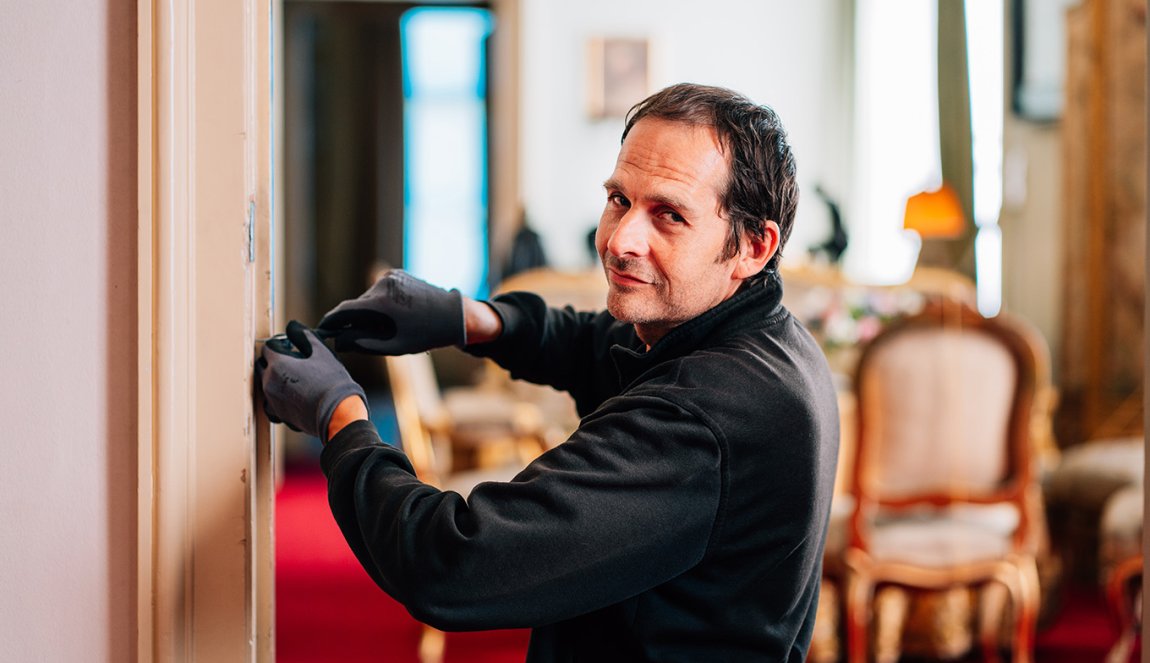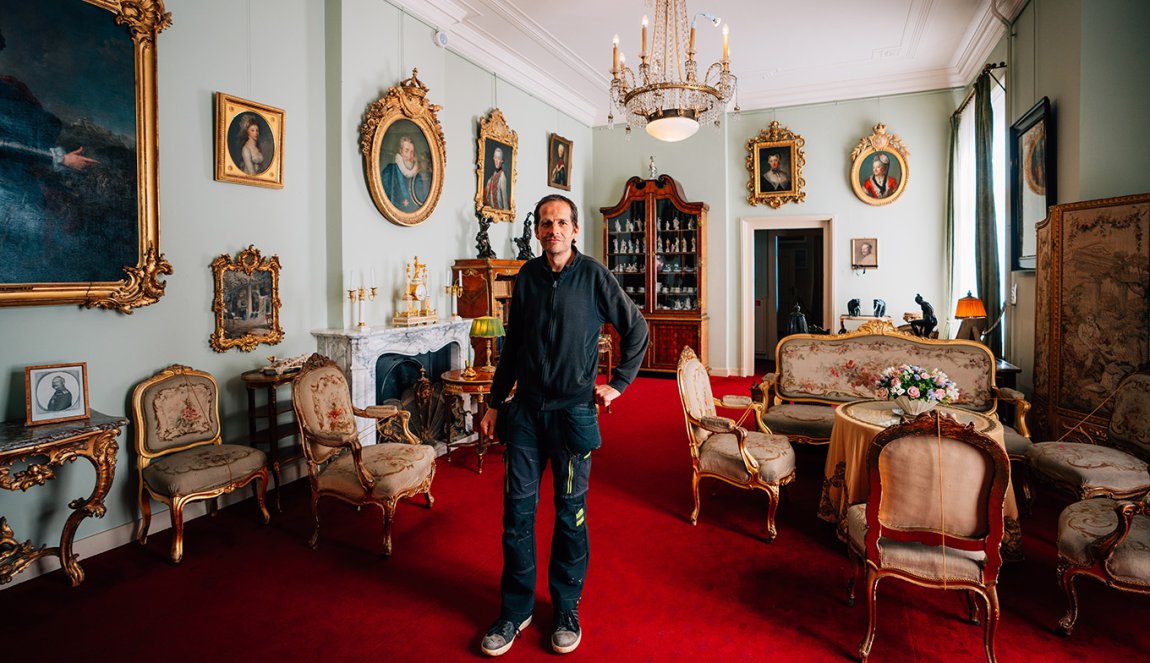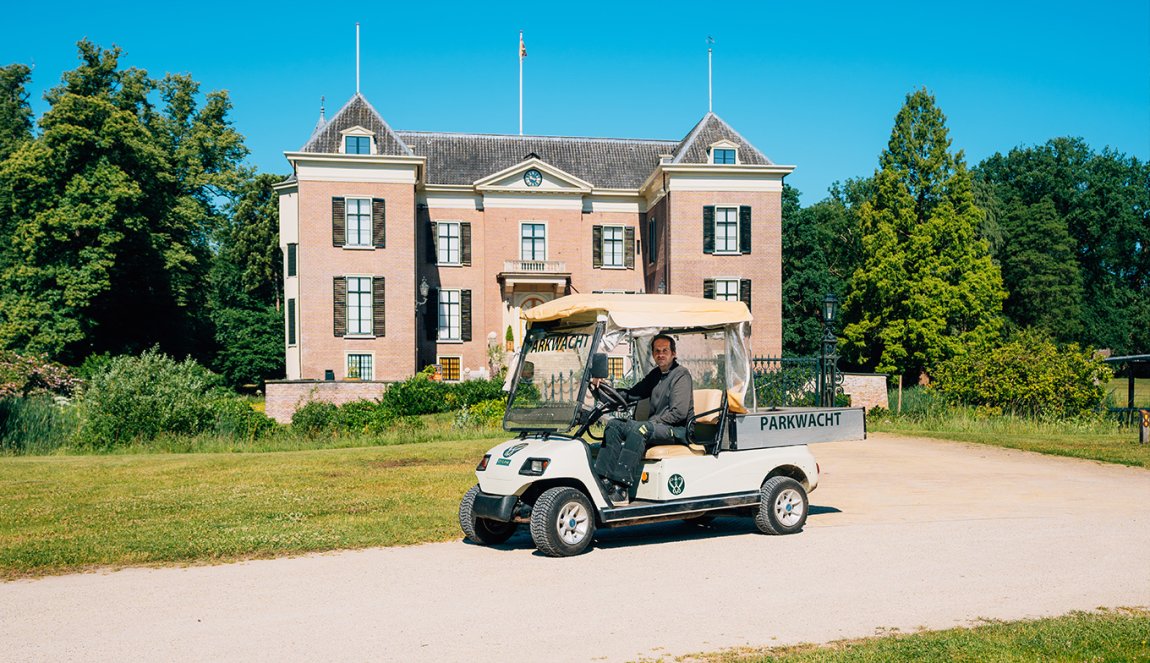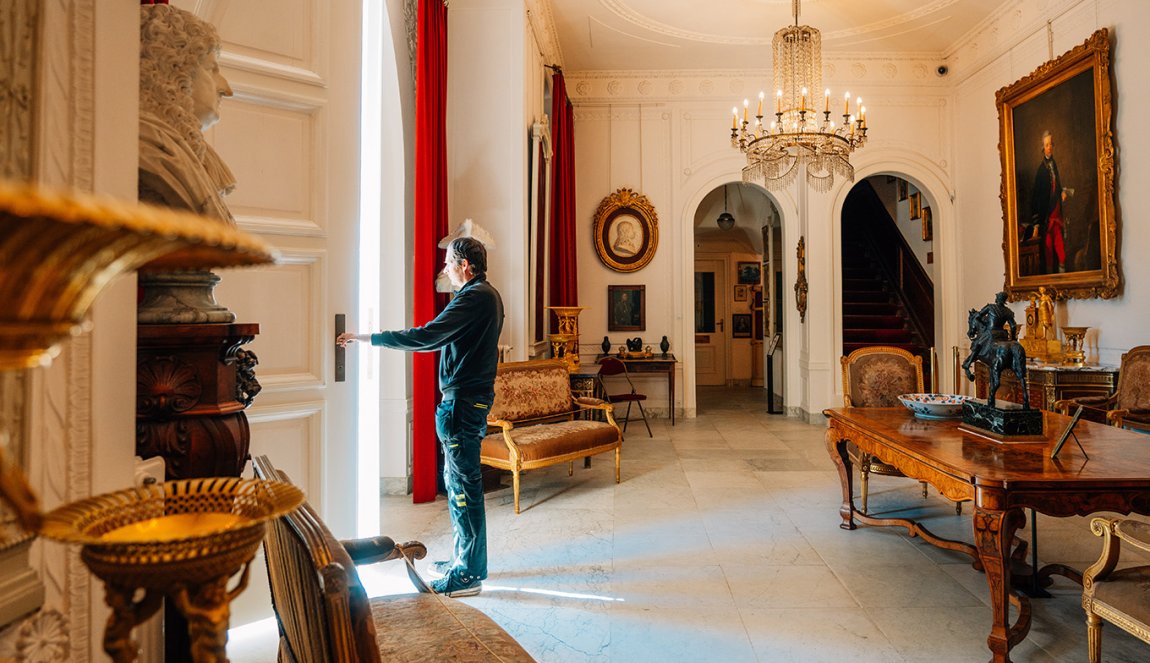
A slice of world history in Doorn
Bring yourself, Jeroen will do the same
Jeroen Simonis (43) is caretaker and supervises Doorn Castle’s collection.
Jeroen Simonis
As the former residence of an exiled emperor, Doorn Castle is unique in the Netherlands. This is where Wilhelm II lived after his abdication, surrounded by his own furniture and objects, which means that our collection is of pristine quality. He brought more than 60 wagon loads of all his personal belongings by train: mirrors, cabinets, tables. Come and admire all these items from the German palaces that found a home in this modest manor house in the municipality of Doorn in the Utrechtse Heuvelrug region.

Authentic display

Another reason why Doorn Castle is so special is that everything has been preserved in its original state. After Wilhelm’s death in 1941, the house immediately became a museum. It was almost as if a bell jar was placed over it. The result is an authentic display of Wilhelm’s life here, untouched by time or generations of residents before or since. Thanks to various sources and photographs, we present it exactly as it was in the past, even down to ordinary everyday items such as his slippers, Q-tips, cigars and stationery, his glasses, and the newspaper on the table.
It is an honor to take care of the "house” and pass it on to future generations.
The emperor’s staff

My set of keys gives me access to all the rooms and chambers in Doorn Castle. Better yet, my position as caretaker allows me to live in the gatehouse on the estate, just like the steward of the emperor himself. At the time, Wilhem had the building constructed as working quarters and the steward's residence. I like to imagine what it must have been like to work on the estate 100 years ago. In the "house" – our nickname for Doorn Castle - we give special tours in which we show daily life from the workers’ perspective. We take you to the kitchen, the laundry room, and the staff quarters in the attic via the service staircase.

Many castles, even in this day and age, can only function and receive daily visitors through the hard work of their staff. Large castles and smaller estates really rely on volunteer organizations. Even castles such as Loevestein Castle, Muiderslot Castle, Amerongen Castle, and Zuylen Castle depend on a caretaker and many volunteers. They give tours, maintain the lavish interiors, furniture and floors, polish the silver, and prune the rose bushes.
Caretaker in charge

The position of caretaker is crucial at Huis Doorn. I'm responsible for maintenance, security and opening and closing the buildings. I’m also the contact person for all the volunteers who work here. At Huis Doorn, for example, we have only five paid employees and almost 200 volunteers. Sometimes I help out as a tour guide and point out unsafe situations all the while managing the daily operations. This role really suits me. It's a great job and never boring because every day is different. Moreover, it is an honor to take care of the "house” and pass it on to future generations.
